Duckweed Invasion - Our Counter Attack!
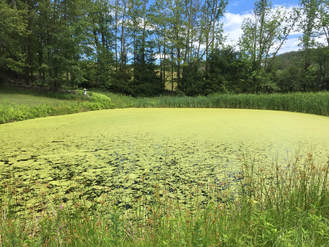 Light green duckweed takes over!
Light green duckweed takes over! In any event, it never did more than lurk in the recesses of the shore weeds and was never an issue for our swimming or the wildlife the pond attracts. Until this year, when it suddenly grew in a matter of days to cover the entire surface of the pond in a thick green carpet.
We are not sure why this happened this year - whether it was the weather, or new environmental factors we are unaware of, but we could no longer do our daily swims and were concerned about the effects on our wildlife. The bald eagles, blue herons, barn swallows and others, can’t access the fish and insects on the open water surface to feed, and our small mouth bass wouldn’t be able to feed on the surface insects.
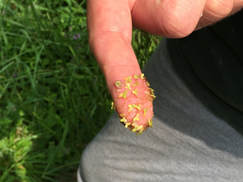 Duckweed are tiny individual plants
Duckweed are tiny individual plants I wasn’t willing to go for the herbicide solution for our pond that we swim in.
So I went to our garden center to ask for advice. You can buy koi fish that eat the duckweed. You need quite a few fish to make the duckweed disappear! Or you can buy chemicals. The disadvantage with them is obvious. In many states - like New York, you need a license to buy and apply it, as it is a poison. You kill the plant, it sinks to the pond floor and decomposes. This robs the oxygen from the pond, which would be bad for the fish. And since we swim in the water and the pond has a slow recharge rate, we were concerned about how long the poison would linger and get into our eyes, mouths and skin.
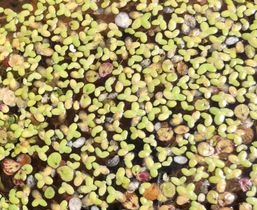 individual duck weeds are in millimeters!
individual duck weeds are in millimeters! This is more easily said than done! My research revealed that doing this is very difficult. People come up with all manner of creative solutions to try to remove the plant. These range from ropes with various barbs attached and dragged across the surface, vacuum contraptions, skimmers, nets, all sorts of ideas. None of which seem to work very well.
There was only one course of action which seemed doable for us, and by harnessing physics and the plant’s anatomy, we felt we could be reasonably successful. We would create a skimmer box and use a trash pump to suck out the duckweed.
Duckweed loosely floats on the surface of the water, and is comprised of thousands of tiny 1-3 leafed plants, which have tendrils that hang down about an inch under the surface. When they become a thickly packed carpet, they tend to cling together, and if you gently sweep your hand across the surface, you’ll see all the surrounding duckweed follow along behind your hand en-mass.
This makes them easy to corral, as they seem to want to follow along as you draw in their brothers and sisters. You can use this to great effect!
The principle is the same as if you left your book, reading glasses and TV remote scattered across your bed one morning, and then pulled the top linen sheet down onto the floor along one side. They would all be carried down onto the floor, although they weren't touching! A properly placed skimmer box will have the same effect from all four sides. Like the linen sheet, that holds objects on its surface, and will drag them along when pulled, so will surface tension. It will be the conveyor belt that pulls along everything.
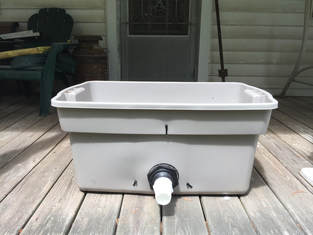 Re-purposed plastic storage bin
Re-purposed plastic storage bin For us, this was easily accomplished by discharging the water onto an uphill grassy slope and letting the lawn catch the duckweed as the water flowed back downhill to the pond. Discharge the strongly pressurized water across a tarpaulin to spread it out and avoid erosion.
We used an old plastic 30 gallon (120 litre) storage container. Use one that has some contours or decorative ridges in the walls. This will increase rigidity and prevent ‘oil-canning’ (collapsing walls from the surrounding water pressure). Cut out a 2 ¾ inch or larger hole for attaching the intake hose fittings.
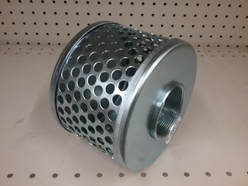 Strainer Basket
Strainer Basket 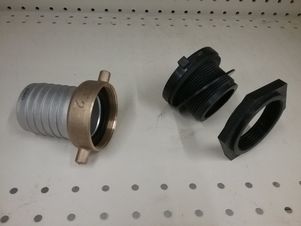 Threaded lug pin coupler- bulkhead fitting
Threaded lug pin coupler- bulkhead fitting The skimmer box has to be perfectly level, with the top edges about one inch below the surface of the water for it to work efficiently. When the pump starts to evacuate the water, the box will want to float up. So you have to first weight it down inside with some heavy things (we used tow chains, but anything that doesn’t block the intake will do. (***Note: we did not reattach the strainer basket, as the pump size we were using would easily handle just the clumps of duckweed). Without a strainer, you have to make sure that the pump will not ingest anything larger than it was designed to handle - or create a screen inside the box.
I had read in my research that the duckweed is high in protein and is grown commercially for live stock. They also mentioned that duckweed seems to be a delicacy in some Asian countries.
Now a couple of weeks later, there is still some duckweed, but it is not green anymore; it is kind of yellow and each day I see less of it.
This year, on a flight over the East coast of the U.S. you can see most ponds covered with the duckweed. I guess this summer everything was right for this delicate water plant to conquer all freshwater bodies!
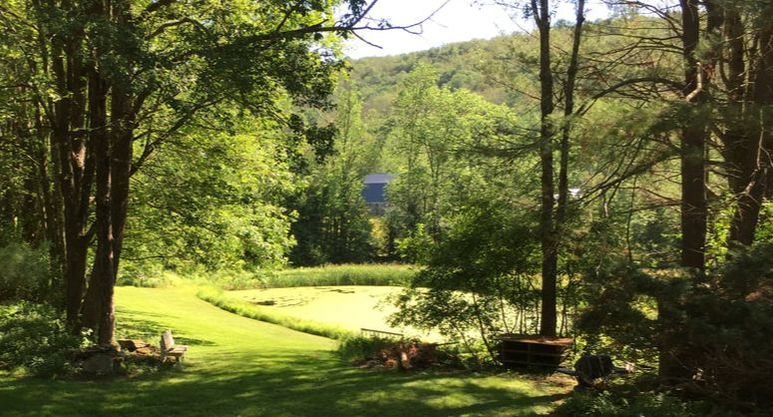
 RSS Feed
RSS Feed